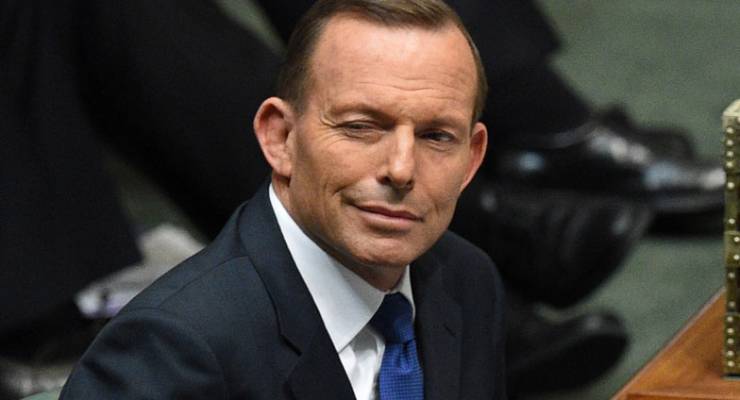
Off the back of three record-breaking years of greenhouse gas emissions and five years of nothing on energy policy, it’s difficult to remember that Australia once led the world on climate action.
Even more difficult to remember is that keeping the planet alive was once a moderately bipartisan goal: John Howard was forced by colleagues to bring an emissions trading scheme to the 2007 election, a policy both Brendan Nelson and Malcolm Turnbull would (in principle) support as opposition leaders.
Then came Tony Abbott, who, throughout his time as opposition leader, prime minister, and backbencher, helped kill each of the following:
- Kevin Rudd’s proposed 2009 Carbon Pollution Reduction Scheme
- Julia Gillard’s legislated 2012 carbon price and the emissions trading scheme it would have eventually turned into
- The Climate Commission (now the non-profit Climate Council) and 8000 gigawatts from the renewable energy target
- Chief Scientist Alan Finkel’s proposed 2016 Clean Energy Target, widely seen as the third-best emissions policy
- Malcolm Turnbull’s 2018 National Energy Guarantee, definitely the fourth best option and, with 2021-era energy targets aimed at 2030, one largely seen as both pointless and ultimately symbolic of the Coalition’s inability to agree on even superficial action
Now, with the landmark IPCC report giving the world roughly 10 years to get on track, Australia simply cannot afford a repeat of this decade. Here are the things we can realistically do:
Check rank denialism
The Coalition has roughly zero hope of acting on greenhouse gas emissions as long as energy policy is dictated by the Monash Forum. But, outside of the far-right’s total denialism, last week’s IPCC report also exposed many ostensibly moderate Coalition members as either ignorant or uncaring; so much so that former Liberal leader John Hewson has openly called for a protest vote on climate change at the Wentworth byelection.
Ahead of the federal election fear campaigns and counter-campaigns over energy prices, it will be important to remember that, as more renewables enter the grid, prices to 2030 are expected to drop no matter what under each of the following emissions reductions targets:
- business as usual (with average savings of 18.5%)
- 26% (savings of 20.8%)
- 45% (savings of 18.3%)
- 65% (savings of 15%)
Finally, according to a Lowy poll, 84% of Australians are actually happy with more government investment in renewables and grid infrastructure if it means not killing the planet. If my maths stacks up, a government selling “nothing” might be in trouble.
Action from Labor
The ALP, if it forms government, has a serious target of 50% renewable energy by 2030, and while it remains unclear if they’ll opt for an emissions trading scheme or float a meatier NEG, that’s still almost double that of the Coalition.
But there are always holes to be addressed, especially Labor’s inconsistent record on the Adani-Carmichael coal mine. Shorten also offered only a lukewarm response to the IPCC’s demand for a complete phase-out of fossil fuels by 2050 — a position that would not just affect Australia’s energy mix but our mining, processing and associated industries.
The role of fossil fuel-related jobs in Australia, while often inflated, is a legitimate concern and will require a genuine transition. Yet the ALP’s recent record on coal and gas mining nonetheless betrays climate action and, as we’ll see, there are plenty of replacement industries.
Embrace change
Part of what’s so frustrating about our federal policy vacuum is that almost every other facet of society has done amazing work in the transition to decarbonisation. The states and territories, outside of the Adani and gas mining support, are largely thriving. And on the industry end, global renewable capacity doubled the growth of fossil fuels last year.
In terms of newer industries, the increased need for lithium batteries will mean a resurgence for Australia’s mining jobs, British investor Sanjeev Gupta has signalled a renewable manufacturing revolution with steel-making and potential electric vehicles factories, and Finkel’s recent push for a hydrogen fuel-cell industry hints at a replacement for coal and gas exports.
Finally, the Australian Energy Market Operator’s 20-year roadmap for energy infrastructure, the inaugural Integrated System Plan, demonstrates how a decentralised, two-way grid will become essential as Australia heads towards a renewable grid and starts to exit coal-fired power stations (12 by 2030, if we follow the IPCC).
Basically, in any logical political system, the potential of a future built on not just wind farms and solar panels but hydrogen cells, storage, 24/7 renewable generation, and a new car manufacturing industry would make this — to paraphrase one supremely disappointing former leader — the most exciting time to be an Australian.








Crikey is committed to hosting lively discussions. Help us keep the conversation useful, interesting and welcoming. We aim to publish comments quickly in the interest of promoting robust conversation, but we’re a small team and we deploy filters to protect against legal risk. Occasionally your comment may be held up while we review, but we’re working as fast as we can to keep the conversation rolling.
The Crikey comment section is members-only content. Please subscribe to leave a comment.
The Crikey comment section is members-only content. Please login to leave a comment.